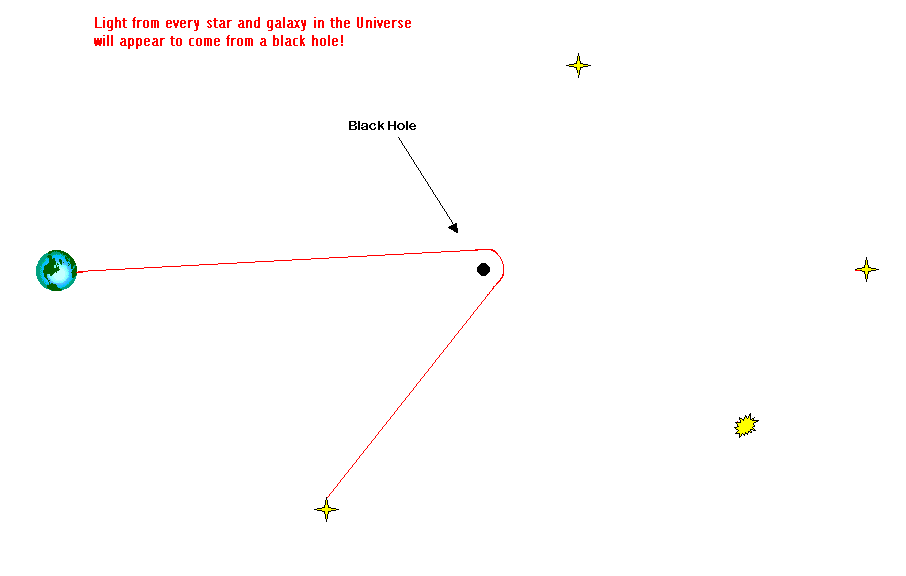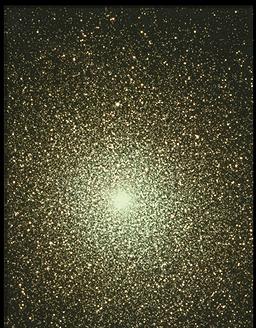
What Astronomers Haven't Told You
What I'm going to discuss below requires just two assumptions:
Black Holes exist
Light is bent by the gravity field of a black hole according to current astronomical beliefs.
Deflection of light by a Black Hole
According to contemporary astronomical theory, a ray of light passing near the surface of a black hole is deflected (bent) greatly by the gravitational field of the black hole. In fact, for every star or galaxy in the universe there are an infinite number of light paths which will pass near or circle the black hole and arrive at our viewing position (see for example,Ohanian, The black hole as a gravitational lens, Am .J. Phys, 55(5), May, 1987).
Only a few of these light paths result in detectable light being deflected to our telescopes, but in fact a detectable light path can be found from every visible star and galaxy in the universe which will pass near a black hole and appear to come from it or from near it!
The following illustrates the kinds of light paths from distant stars and galaxies near a black hole.
Click on the image for a larger view
So what does this mean? It means one of two things, depending on the mass of the black hole.
Moderate Mass Black Hole
If the black hole has only moderate mass (say up to 20 times that of the sun), or is very distant, all of the deflected rays of light will appear to come from the black hole itself. Individual images cannot be identified, and will blend together to form a single image. There will be at least one path of light coming from the black hole from every visible object in the universe! The black hole will be one of the brightest objects in the sky!
Click on the picture for a larger view.
Massive Black Hole
When the black hole is very massive (i.e. has a large gravitational force), or is very nearby, a telescope on earth would be able to distinguish some individual deflected images. The black hole would itself appear to be bright from light "borrowed" from every other star or galaxy in the universe, but it would be surrounded by star images. These are "false" images -- images of distant stars whose light has been deflected by the gravitational force of the black hole so as to appear to be around the black hole. What would it look like? How about this!

That's right! If our two assumptions at the beginning of this treatise are correct, a massive black hole would look just like a globular cluster or elliptical galaxy. For extremely massive black holes, it could even look like an open cluster.
The situation could be a little different if the black hole were rotating. In that case, the gravitational field around the black hole would be distorted, and we might see something like the following:

Click on the picture for a larger view.
So why haven't you heard about this from the astronomers? I don't know. For one thing, if every moderate-mass black hole shines as one of the brightest object in the heavens, where are they? They would have a very nondescript spectrum, since their light would be a combination of billions of stars and galaxies. But they have not been found. Therefore at least one of our initial assumptions must be wrong.